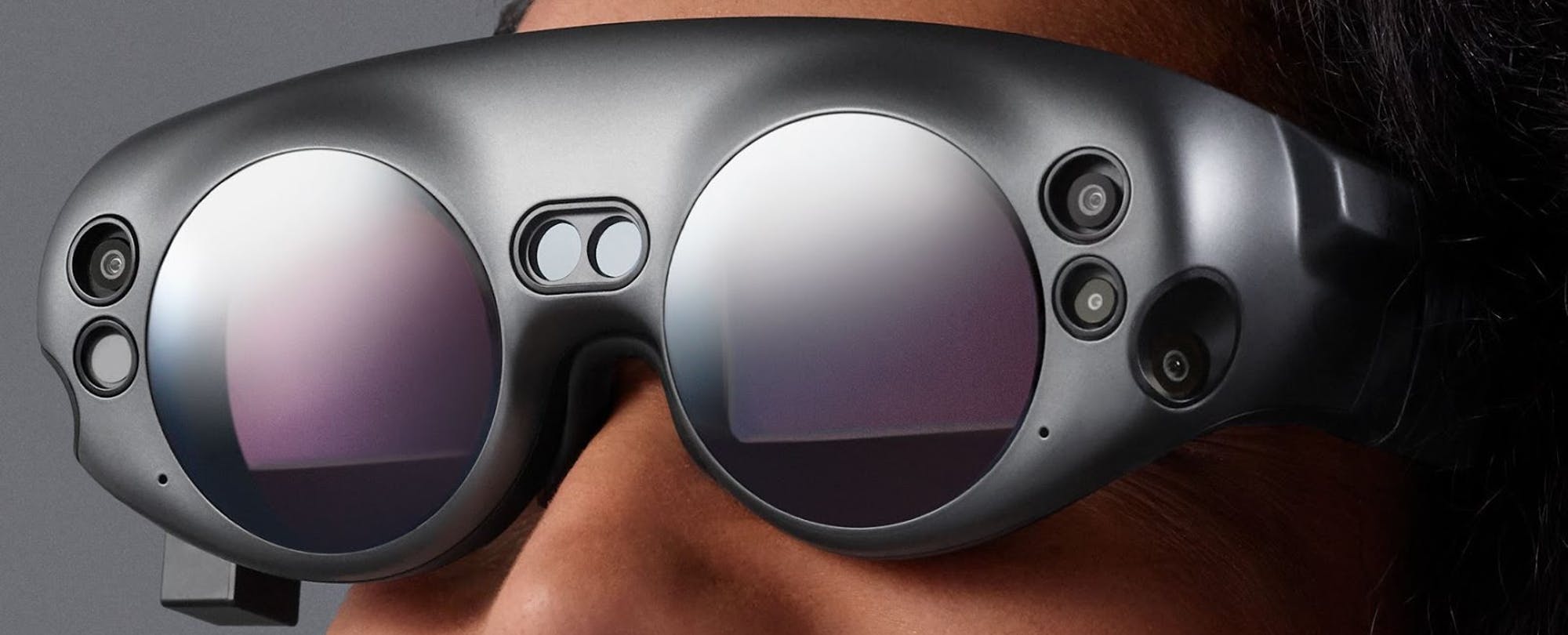
When it comes to the Magic Leap, we often assume it’s just about technology. It is, after all, revolutionary augmented reality technology that could change the face of an industry. Last week, we saw the first impressions of what the company’s vision for the technology is. And it’s not necessarily what you thought. Let’s talk about the headset first for a moment. The headset costs $2,295 and as I have alluded to, isn’t quite what you expect. It’s quite light, even though it looks like something out of a bad 80s sci-fi movie.
It comes with a wide variety of nose pads to ensure a snug fit. If you’re in an area where you can buy the headset, it’ll be delivered by a worker from the startup Enjoy, who will help you set everything up and make sure it fits properly. Putting on the Magic Leap One involves pulling back the head strap, lowering it over your head, and then pushing the rear strap in a bit to tighten it. There are no dials or velcro strips to deal with. The headset is connected to a small, Discman-shaped Lightpack, which houses all of its computing power.
But the hardware alone won’t make Magic Leap a success. As with any new platform, software and experiences are what will make it successful. Rio Caraeff, Magic Lea’s Chief Content Officer describes the Magic Leap as “really about amplifying who you are, human-centric computing, spatial computing. Meaning, with this technology, they are trying to move away from us staring at screens and give us ways to reconnect with the physical world. But is that possible? Or even something that we should want?
When it comes to emerging technology, I think we are still stuck in the past. I don’t know that we have the ability to fully submerge ourselves into these new technologies because of the world around us. I use the word infrastructure often when I’m talking about flying car technology. But the same goes for augmented reality technology. Do we have the technological systems in place to support our use of augmented reality? Iw ould argue that we don’t. I’m not saying that we can’t get there, but right now we most certainly don’t.
Caraeff believes this too. He believes that we can’t just focus on hardware, but we also need to build the software to bring out the technology’s full potential. In addition, there needs to be content to entice people into augmented reality. Caraeff states:
“We wanted to focus on essentially a full-stack approach. Everything from optics, to hardware, to sensors, to the operating system, to developer tools, to developing environments, to leading examples of what you can do with this new medium. Because ultimately if we’re not going to take responsibility for it, if we’re not gonna be accountable for it, then who will?”
Who will take responsibility for it is another good question? Right now, it’s individual companies like Magic Leap, but with this kind of technology becoming more and more prevalent in our everyday lives, someone else will have to, and you know what I’m going to say. This will, eventually need some kind of government regulation. When that occurs and what it looks like remains to be seen, but its something that we will have to consider for the future.

[…] post Will Augmented Reality Technology Need Government Regulation? appeared first on Saintel […]